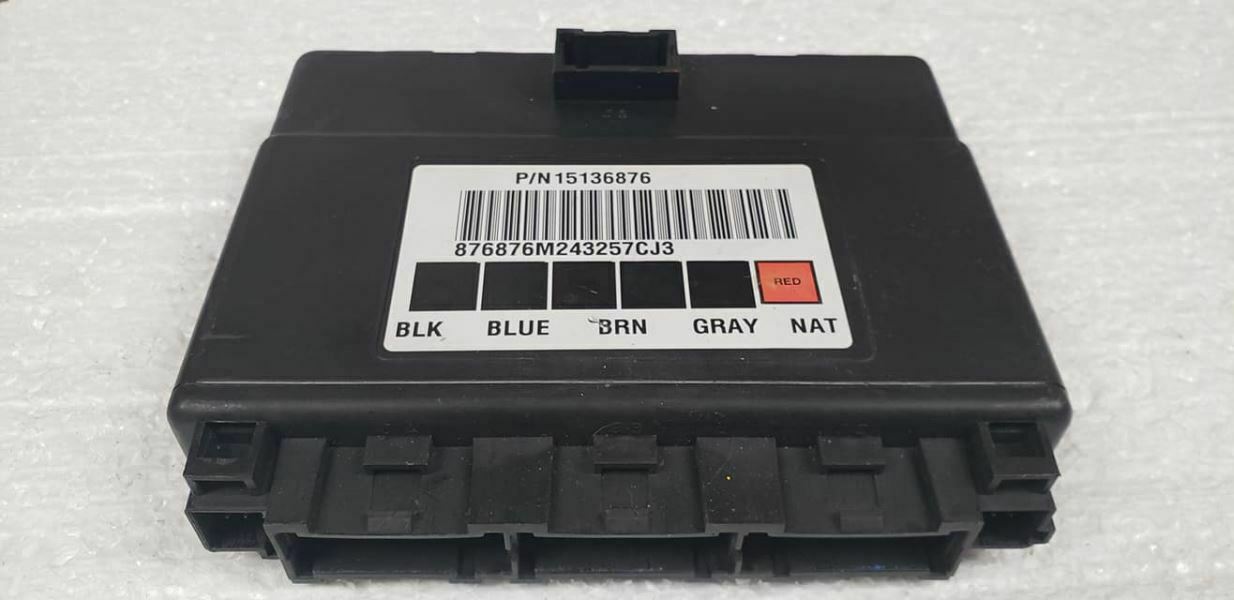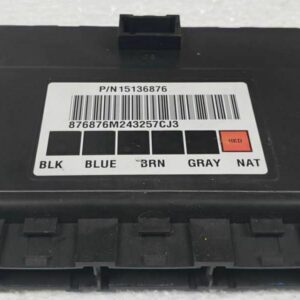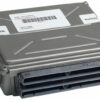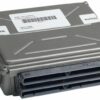Tired of Your Truck’s Electrical Gremlins?
As a mechanic with over two decades of experience, I’ve seen it all. A 2005 Silverado comes in with the radio acting possessed, the power locks working only when they feel like it, and a security light that won’t turn off. The owner has replaced batteries and checked fuses, but the random, frustrating issues persist. The culprit? A failing Body Control Module (BCM). If this sounds familiar, you’ve found the permanent, hassle-free solution for your vehicle.
This isn’t just a replacement part; it’s a direct-fit, plug-and-play fix. We take a genuine GM BCM and professionally program it with the latest GM software updates specifically for your truck or van’s Vehicle Identification Number (VIN). This critical step eliminates the need for an expensive trip to the dealership for programming. You get a module that’s ready to install right out of the box, restoring your vehicle’s essential functions and getting you back on the road with confidence.
From the Diagnostic Bay
“A customer’s 2006 Sierra 2500 was a real head-scratcher. The dome lights would stay on, draining the battery overnight, and the power windows had a mind of their own. We scanned it and found a slew of communication errors all pointing back to the BCM. Water intrusion from a leaky windshield seal had corroded the board—a very common failure point I’ve diagnosed on hundreds of these GM trucks. Instead of a costly dealer visit, we installed one of our VIN-programmed modules. The swap took less than 30 minutes, and every single electrical issue was resolved instantly. It’s the most reliable fix for these specific symptoms.”
Is Your GM Vehicle Showing These Symptoms?
- ✔ Intermittent or non-functional power windows, door locks, or mirrors.
- ✔ Erratic interior or exterior lighting (e.g., dome lights won’t turn off).
- ✔ The security or anti-theft system light stays on, preventing the engine from starting.
- ✔ Gauges on the instrument cluster behaving erratically or not working at all.
- ✔ False warnings on the driver information center (DIC).
- ✔ Problems with the radio or climate control systems.
- ✔ A no-start condition where the starter doesn’t even click.
A Straightforward Guide to Installation
Replacing your 2003-2007 GM BCM is a manageable job for a DIYer. The location varies slightly between trucks and vans, but the process is similar.
- Safety First: Always disconnect the negative terminal from your vehicle’s battery before working on any electronic components.
- Locate the BCM: On Silverado and Sierra pickups, it’s typically found under the driver’s side of the dashboard, near the steering column. On Express and Savana vans, it’s often located behind the center dash panel.
- Remove Connectors: Carefully unplug the multiple wiring harness connectors from the old BCM. They have locking tabs that need to be depressed to be released. Do not force them.
- Unbolt the Module: Remove the bolts or nuts securing the BCM to its mounting bracket.
- Install the New BCM: Mount your new, pre-programmed module in place and secure it with the original hardware.
- Reconnect Everything: Plug all wiring harnesses back into their correct ports on the new BCM. They are color-coded and keyed to prevent mix-ups. Reconnect the negative battery terminal.
- Perform Final Procedures: Follow the post-installation steps below to ensure all systems are communicating correctly.
Important Post-Installation Steps
After installing your new 2003-2007 GM BCM, a couple of final procedures are necessary for full system integration. These ensure safety systems and vehicle communications are correctly re-established.
- Airbag System Reset: The ‘Setup SDM Primary Key in BCM’ procedure must be performed with a compatible high-level scan tool. This step is crucial to clear the airbag warning light and ensure the safety system is operational.
- Brake Pedal Position Sensor Relearn: Some vehicles may require a recalibration of the brake pedal position sensor. This ensures the BCM receives accurate input for brake light operation and stability control functions.
Note: If you are not equipped to perform these relearn procedures, a local automotive shop can typically complete them for you quickly.
Guaranteed Fitment for Your GM Vehicle
This module is a direct replacement for part number 15136876 and is also interchangeable with the following part numbers: 15167329, 15194169, 15747545, 15136224, 15116065, 15198115, and 10367689. It is compatible with a wide range of models:
- Chevrolet Silverado 1500/2500/3500 (2003-2007 Classic)
- GMC Sierra 1500/2500/3500 (2003-2007 Classic)
- Chevrolet Express 1500/2500/3500 Van (2003-2007)
- GMC Savana 1500/2500/3500 Van (2003-2007)
- Chevrolet SSR (2003-2006)
Important: Please provide your VIN upon purchase. This is mandatory for us to program the module specifically for your vehicle’s options and ensure 100% correct functionality.
Frequently Asked Questions
Do I need to do any programming myself?
No. This BCM arrives at your door fully programmed to your vehicle’s VIN with the latest GM software. It’s designed to be a plug-and-play installation, though some relearn procedures may be needed post-installation.
What information do you need from me?
After you complete your purchase, we simply need the 17-digit Vehicle Identification Number (VIN) from your truck or van. This allows us to load the exact software and settings for your specific vehicle configuration.
Will this fix my ‘Service 4WD’ light?
While a faulty BCM can cause a variety of issues, problems with the 4WD system are often related to the Transfer Case Control Module (TCCM) or the encoder motor. It’s best to have the vehicle scanned for specific trouble codes before ordering.
Is this a new or used part?
This is a high-quality, tested, and verified genuine GM component that has been expertly programmed for your specific application. It is guaranteed to restore your vehicle’s functionality.
What tools are required for the post-installation procedures?
The airbag key setup and brake pedal relearn typically require a professional-grade bidirectional scan tool, such as a GM Tech 2, Snap-on, or Autel scanner. Most local repair shops have this equipment.



